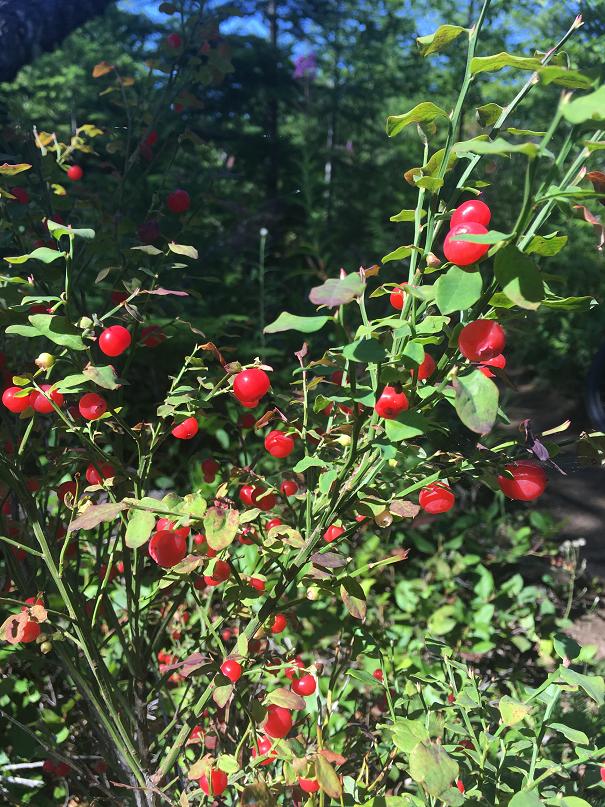 Its summer holidays for the EDB team (yes, we get those!) and the agenda is filled with eating, drinking and mountain biking. And everywhere we go, from the top of Mount Washington to the deepest, darkest forests of Squamish there are truckloads of wild edibles to keep us energized during our long days of adventuring. Chief amongst our foraged pick-me-ups are red huckleberries, which fully ripen right around now and can be found growing just about everywhere in BC.
Its summer holidays for the EDB team (yes, we get those!) and the agenda is filled with eating, drinking and mountain biking. And everywhere we go, from the top of Mount Washington to the deepest, darkest forests of Squamish there are truckloads of wild edibles to keep us energized during our long days of adventuring. Chief amongst our foraged pick-me-ups are red huckleberries, which fully ripen right around now and can be found growing just about everywhere in BC.
Huckleberries, also known as “Bilberries” or just “hucks” as pretty much everybody ‘round here calls ‘em are a member of the Vaccinium family which makes them cousins of blueberries, crans and little bitty lingonberries. They grow on green, thin-stalked shrubs between four and eight feet tall with hundreds of smooth teaspoon-shaped green leaves, each with a prominent light-green vein running right down the center.
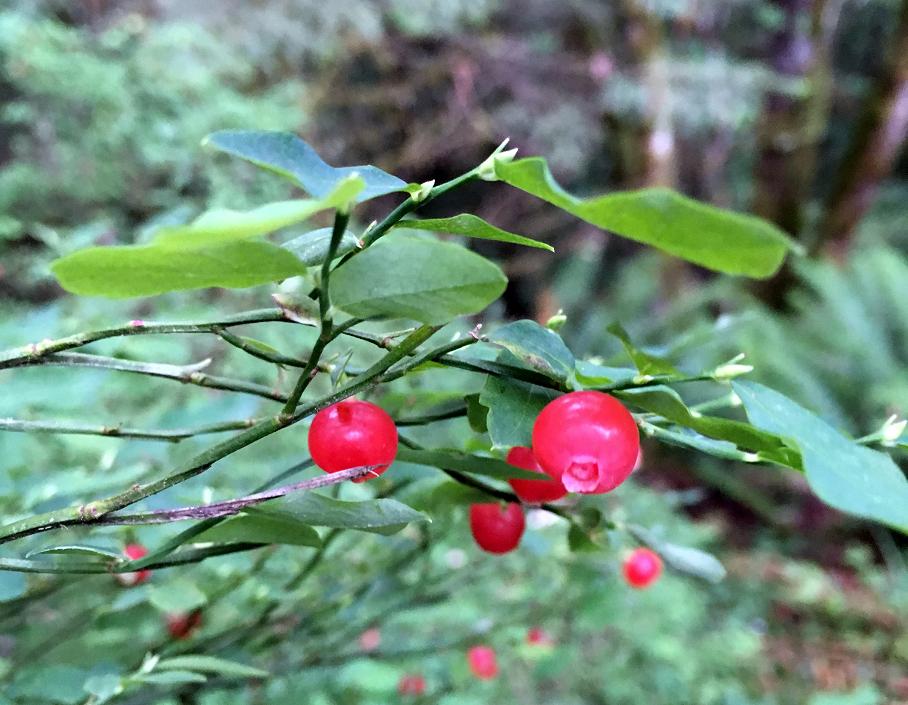 The berries start appearing around mid-June but won’t fully ripen until August making them the ideal forgeable after all the Thimbleberries have dried up and before the Blackberries hit the scene. As they mature the berries will double in size and go from a peachy-blush to a full on fire truck red. Each berry has a distinctive blueberry-like circular indent on its belly as if it got stuck while being shoved into a tiny mason jar. *laughs* I ‘dunno why my mind went there…
The berries start appearing around mid-June but won’t fully ripen until August making them the ideal forgeable after all the Thimbleberries have dried up and before the Blackberries hit the scene. As they mature the berries will double in size and go from a peachy-blush to a full on fire truck red. Each berry has a distinctive blueberry-like circular indent on its belly as if it got stuck while being shoved into a tiny mason jar. *laughs* I ‘dunno why my mind went there…
There are a couple of lookalikes that inhabit the huckleberry’s habitat and bloom around the same time. The key to properly identifying your soon-to-be pie filling is making sure the leaves of the bush are smooth and not serrated and that the berries have the large “mason jar” indent. If you’re not 100% sure it’s a huck… chuck it.
And while I’m on the subject of identification, it’s really easy to get confused when the majority of North Americans refer to the big blue family of Ericaceae berries as “hucks” and Google searches turn up berry pictures in a kaleidoscope of shapes, sizes and colours. Don’t panic! It’s a really common name for a variety of berries that grow in different regions. Just focus on the characteristics I discussed above and forget the rest. Most of ‘em don’t grow around here anyway.
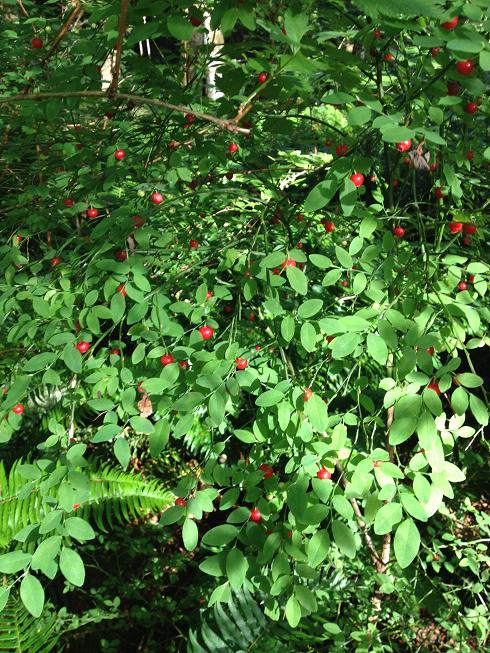 Hucks love the rich, red soil of coniferous forests and draw the majority of their nutrients from decaying trees and pine needles. They don’t need direct sun to survive, but definitely grow taller and more fruitful in the bright spaces between the pine boughs. Anywhere Salal and Oregon Grape make their home, you are sure to find huckleberries tagging along.
Hucks love the rich, red soil of coniferous forests and draw the majority of their nutrients from decaying trees and pine needles. They don’t need direct sun to survive, but definitely grow taller and more fruitful in the bright spaces between the pine boughs. Anywhere Salal and Oregon Grape make their home, you are sure to find huckleberries tagging along.
Alright, we’ve figured out what we’re after and where it can be found. How do you get it home?
What you will need to Forage for Huckleberries
- Container – A plastic Ziplock container with a tight-fitting lid and a bit of paper towel lining the inside will be ideal for storing your berries.
- Anti-Bear Gear – It’s still bear season! Bring the bear bells, mace, whistle and whatever else will keep those hungry buggers at bay.
- Huckleberry Rake – A couple ‘o crafty foragers out there have developed picking tools to make your gathering quicker and easier. They come in a variety of styles, sizes and materials and most cost less than twenty bucks. I’ve never used one, but hey… It might work!
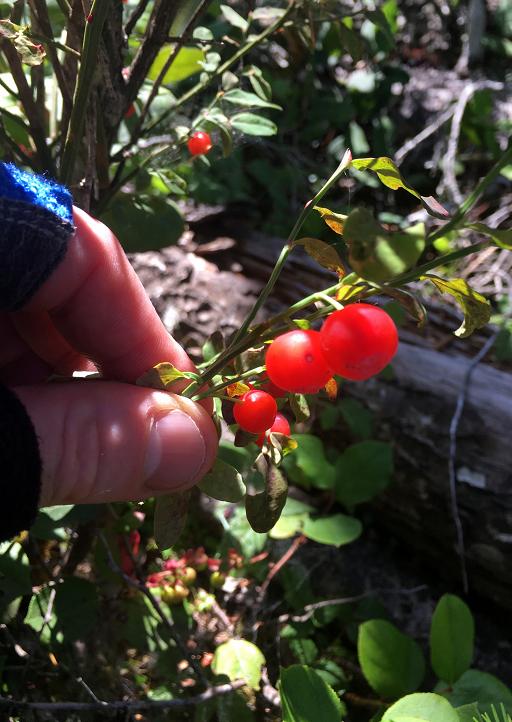 Ripe huckleberries are still quite firm to the touch but pop off the bush with little effort. They’ll squirt if squeezed hard enough, but there’s so little liquid inside each berry that you’d need fistfuls to make any amount of juice… Your T-Shirt is safe.
Ripe huckleberries are still quite firm to the touch but pop off the bush with little effort. They’ll squirt if squeezed hard enough, but there’s so little liquid inside each berry that you’d need fistfuls to make any amount of juice… Your T-Shirt is safe.
The taste of huckleberries is very similar to their cousin the Blueberry, just a whole lot more tart and with a tannic zing that’ll squidge up your face if you’re not ready for it. They could be compared to another cousin, the cranberry which shares a similar sizzle, but has none of the huckleberry’s subtle sweetness or wild “green” flavour. It’s surprising the first time, but after eating two or three berries your palate attunes to the tartness and all the layers of this delicious little berry are revealed.
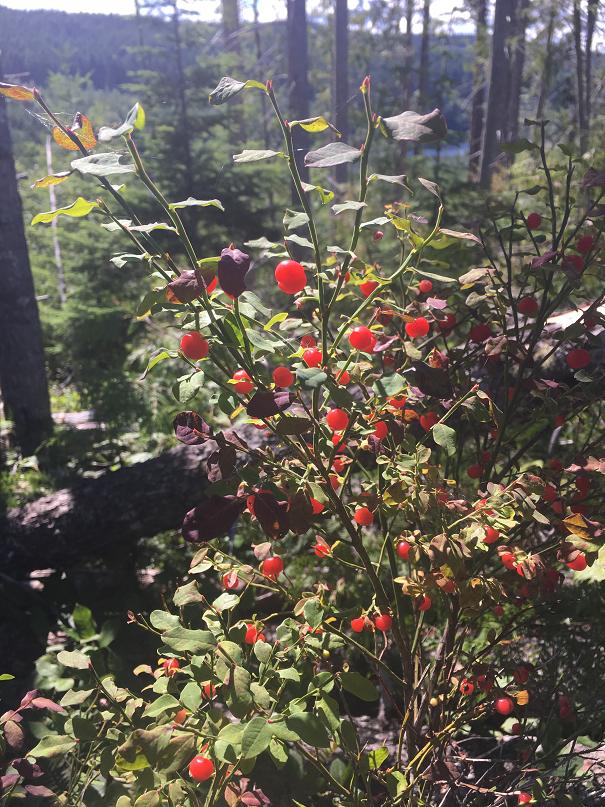 Most people cram their huckleberries into pies, preserves, cobblers and various sticky-sweet treats while I typically like to use foraged berries in more savoury recipes. Fish, duck and pork all pair nicely with hucks as do soft, mild cheeses, almonds, herbs and all manner of grains. It’s also a fine berry to turn into wine or add to a sour beer mash such as Paradise Creek’s legendary Huckleberry Pucker.
Most people cram their huckleberries into pies, preserves, cobblers and various sticky-sweet treats while I typically like to use foraged berries in more savoury recipes. Fish, duck and pork all pair nicely with hucks as do soft, mild cheeses, almonds, herbs and all manner of grains. It’s also a fine berry to turn into wine or add to a sour beer mash such as Paradise Creek’s legendary Huckleberry Pucker.
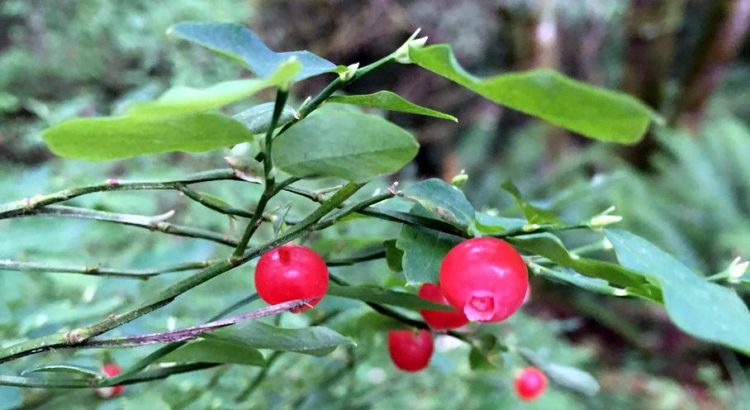
Help fund graduate student thesis on red huckleberry. Crowdfunding link: https://www.classy.org/campaign/red-huckleberry-production-and-gathering-by-native-americans/c111587